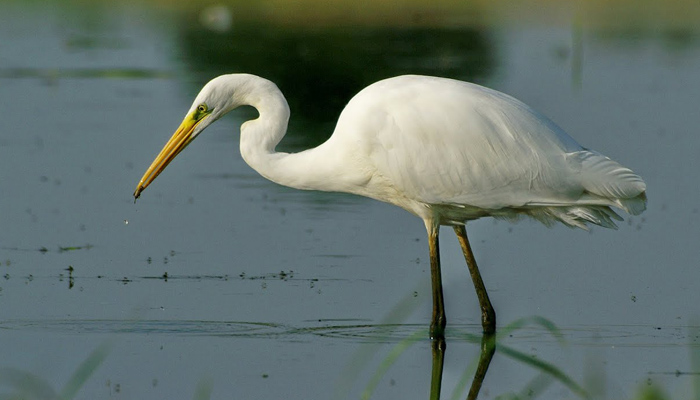
English: Great Egret, Great White Egret
Russian: Большая белая цапля
German:
Silberreiher
French: Grande
aigrette
Mongolian: Цасч дэглээ
Japanese: ダイサギ (Dai-sagi)
Body length: 85-100 cm
Wing span: 145-170 cm
Passage migrant
Breeding season: May-August
Egg number: 3-4(occasionally 5-6)
Egg color: Non-glossy, pale blue.
Brood: 1 per year
Global status: Least concern
Regional status: Least Concern
Habitat: Breeds in colonies at large, shallow swampy lakes, preferably
in reeds with some low bushes and trees. Partial migrant, winters
in Mediterranean region or Africa. Rare but annual vagrant in Britain. Feeds
(on fish, aquatic insects) in flood meadows and along rivers, but also in
somewhat drier terrain.
Identification: A
very big all-white heron. Almost the size of Grey Heron but a shade more
elegant, with longer legs and neck. Needs to be told primarily Little Egret and
white-morph Reef Egret. (Cattle Egret also white, but is smaller and podgier
and often has distinct ochre elements in plumage, so hardly confusable.) Differs
from Little Egret in: slower, more dignified wingbeats; proportionately longer
legs, which project a very long way past tail in flight; yellowish tibia
(‘thigh’) and in part tarsus; yellowish bill except in breeding season; lacks
nape plumes; larger size. Told from white-morph Reef Egret by e.g. larger size,
longer legs, plus straight dagger-shaped bill.
Food: Small mammals, frogs, fishes and
aquatic invertebrates.